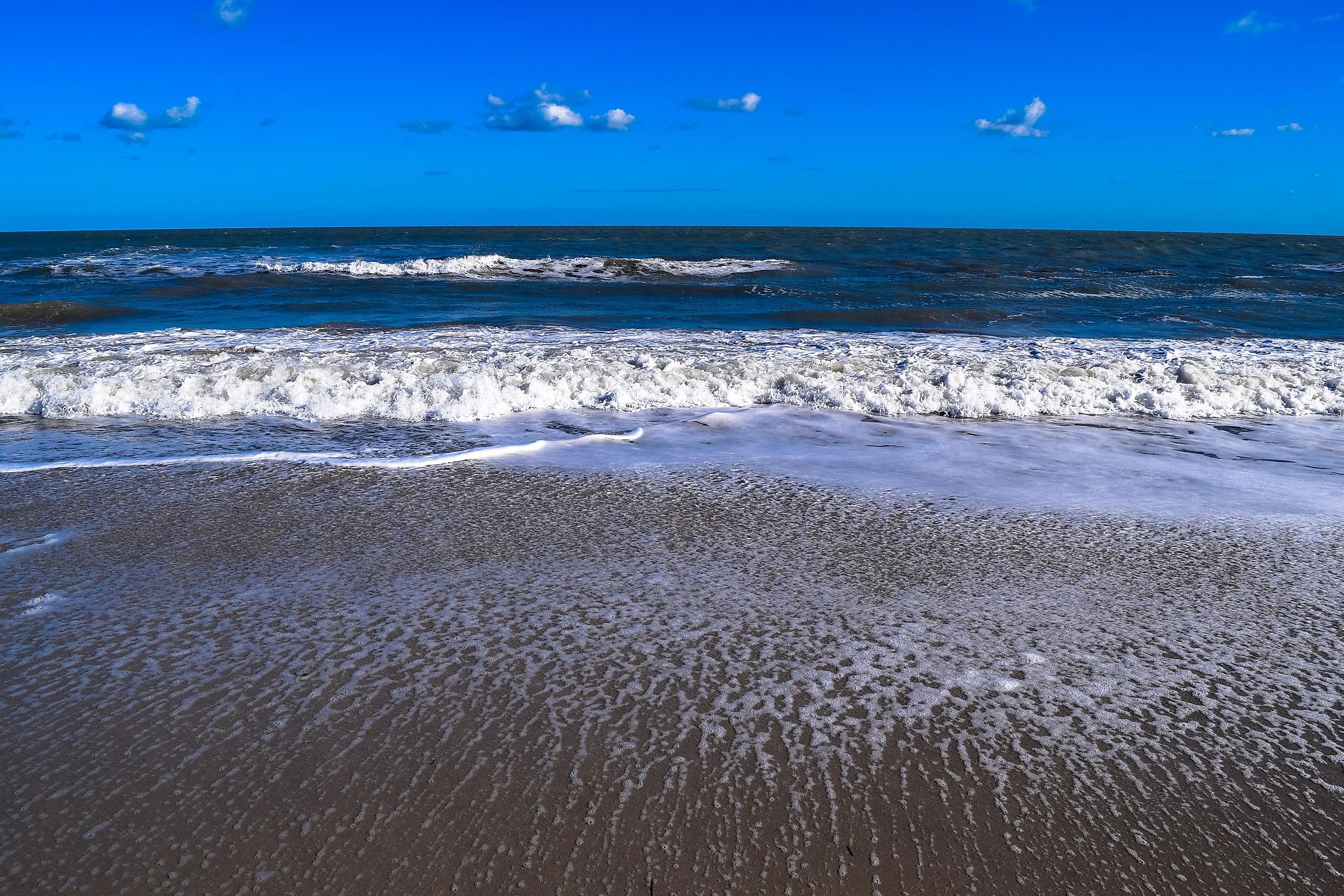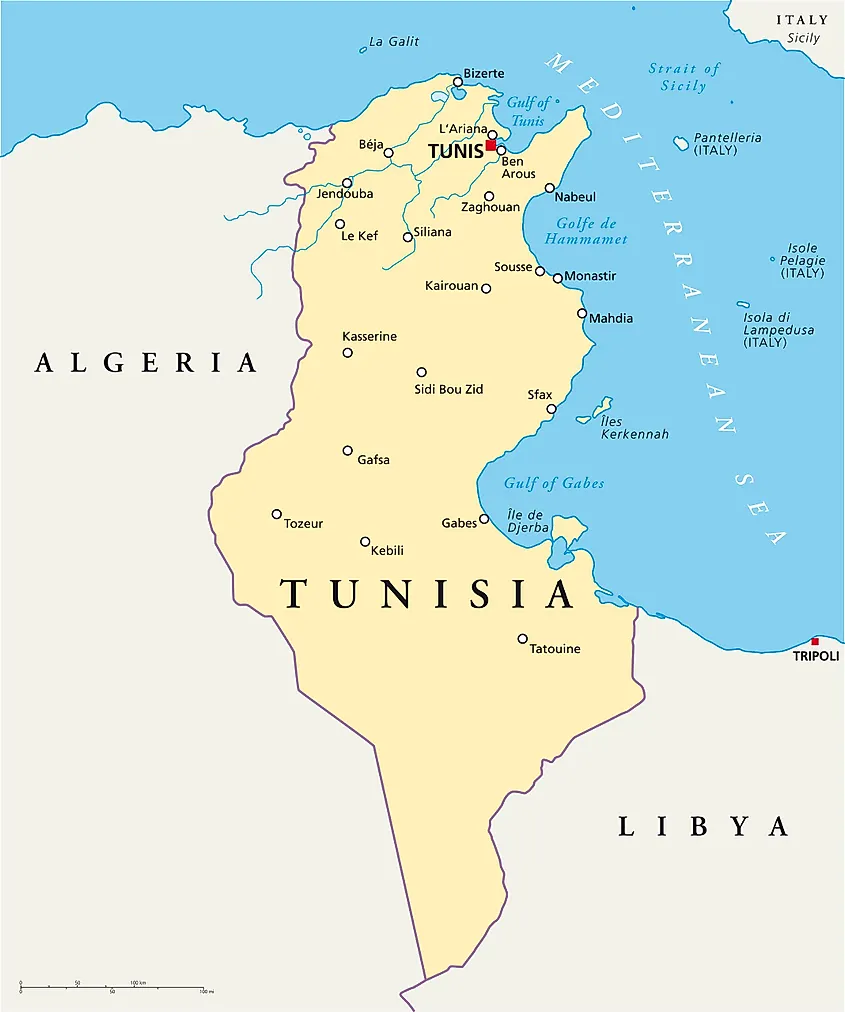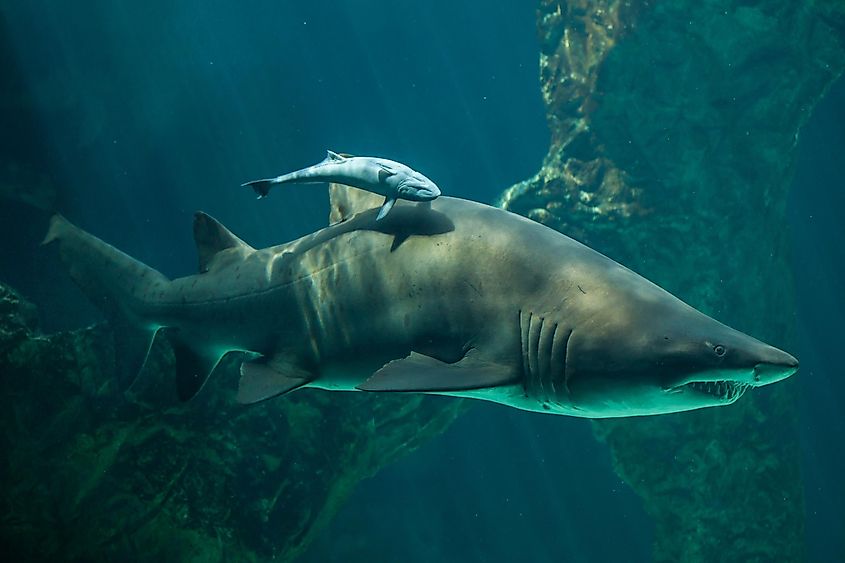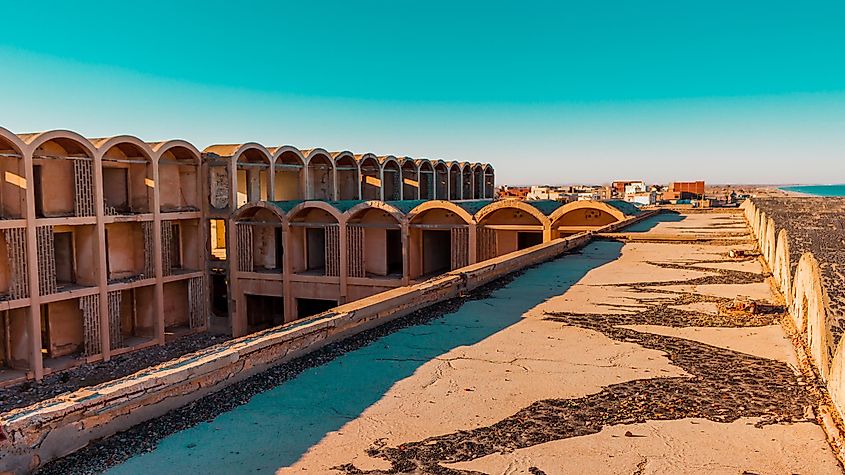
Gulf Of Gabes
The Gulf of Gabes, or the Lesser Syrtis Gulf, is the Tunisian coast side of the Mediterranean Sea. Contrasting with the Greater Syrtis in Libya, the Gulf of Gabes is also known and pronounced as Khaleej Gabiss in Arabic, the official local language of Tunisians and North Africans. The gulf spans 60 miles wide and 60 miles long and is bounded by the Qarqannah (Kerkena) Islands on the northeast and by Jarbah (Djerba) Island on the southeast.

Climate Of The Region
The region experiences a Mediterranean climate, with mildly cold winters and scorching dry summers due to its proximity to the Sahara Desert of both neighboring countries of Libya and Algeria. The city of Gabes, its popular port, rarely get any rain and has a similar desert climate to surrounding areas, but the climate is tempered by surrounding sea waters.
Marine Life In The Gulf Of Gabes

Known for the production of Tuna sponges and more, The Gulf of Gabes is also one of the main habitats for sharks in the region. Studies in the area found water of the Gulf of Gabes, including Sfax Port and Zarzis’s surrounding waters to be nursery areas for elasmobranch sharks and rays.
From a biodiversity standpoint, the gulf encompasses two crucial coastal ecosystems, serving as a nursery for several fish species: the Boughrara and El Bibane Lagoons. Boughrara is the largest lagoon in Tunisia, covering approximately 123552.69 acers and harboring 72 species of fauna, including some 30 fish species. Seventy-eight percent of Tunisia’s lagoon fishermen are based here.
El Bibane Lagoon, located near the border with Libya, covers 74131.614 acers and houses approximately 60 fish species distributed among 31 families. The number of animal species reported in the Gulf of Gabes is 667 (Bradai, 2010), distributed mainly between Pisces (227 species), mollusks (171 species), and sponges (108 species).
Islands In The Gulf of Gabes
The gulf is constrained by two Tunisian islands, both tourist attractions of the country. Djerba borders the gulf to its southeast and Qarqannah, or “Kerkena” island, to the northeast. Karkennah Island, however, is made of a group of separate small islands and was used as a port during the spread of the Roman Empire. The main destinations on the island are Chergui and Gharbi, with an Archipelago of 62 mi2 and a population of 15,500 in 2014.
Human Settelments Along The Gulf Of Gabes

The city of Gabes, located along the gulf's shoreline, was home to many empires and settlers throughout history; some of the first were the Carthaginians, who inhabited the city before the Roman Empire took over.
The town experienced some of its worst economic states during the Arab invasion in the late to mid-7th century. The town was garrisoned by the French against Italian intrusion from nearby Libya. At the same time, Germany took its headquarters back in World War II before it was retaken by British and French armies in 1943. Also declining under the rule of the Ottoman Empire, Gabes, and its port saw a modest revival during the French Protectorate from 1881 to 1955. Today, Gabes is home o over 100,000 Tunisian citizens of Arabian mixed races and authentic North African origins, rich with historical landmarks.
Importance
The main economic utilization of the Gulf of Gabes is for the Ports of Gabes and Sfax, two major international ports of Tunisia, with Gabes being the economic and administrative center. The Gulf of Gabes is also home to one of Tunisia’s very few oil and gas mines, the Ashtart deposit for offshore production. Aside from all the previous is fish and sealife production of the Gulf, which accounts for approximately 40% of Tunisian local fish production.











